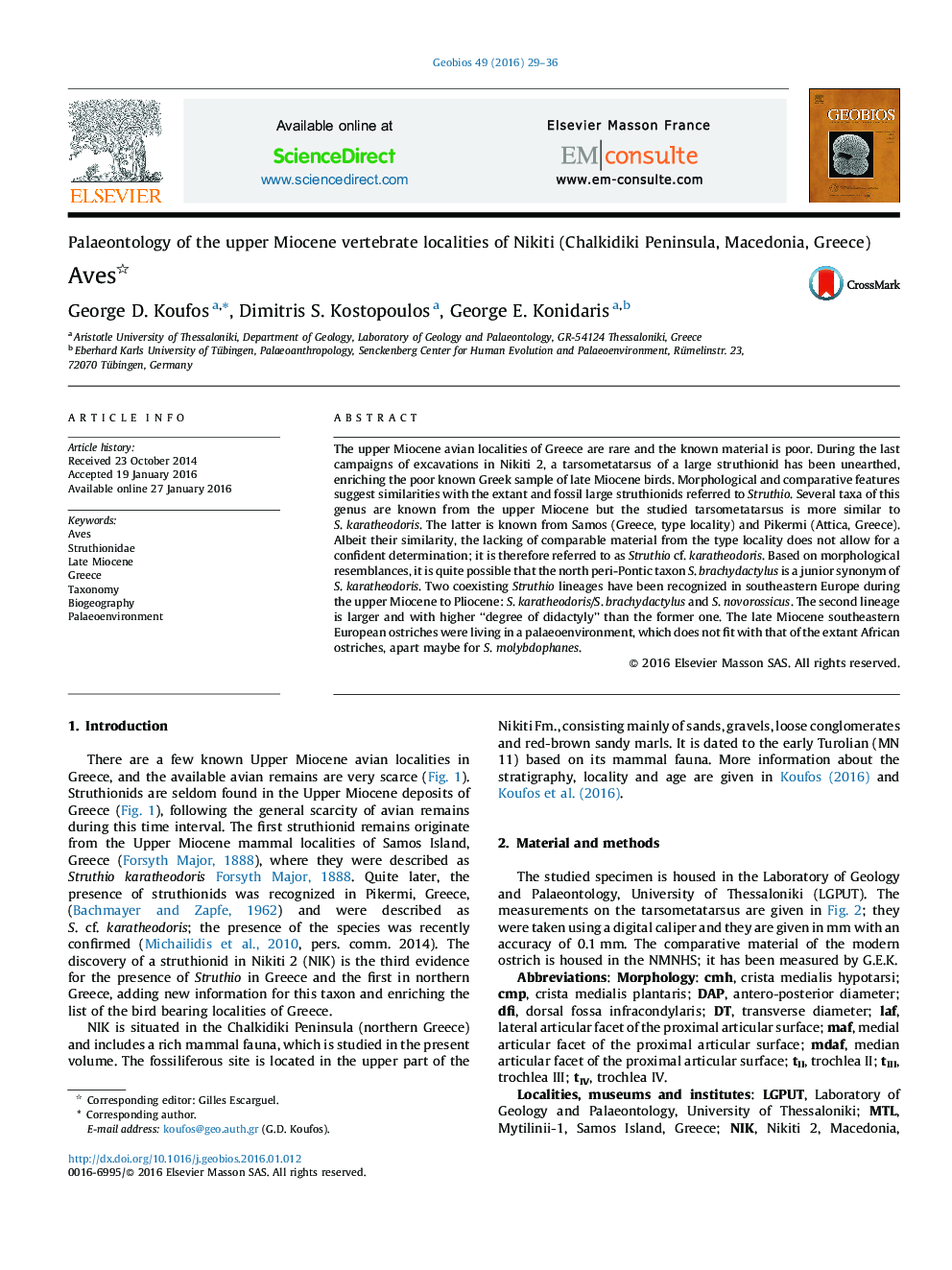| کد مقاله | کد نشریه | سال انتشار | مقاله انگلیسی | نسخه تمام متن |
|---|---|---|---|---|
| 4747972 | 1642100 | 2016 | 8 صفحه PDF | دانلود رایگان |
The upper Miocene avian localities of Greece are rare and the known material is poor. During the last campaigns of excavations in Nikiti 2, a tarsometatarsus of a large struthionid has been unearthed, enriching the poor known Greek sample of late Miocene birds. Morphological and comparative features suggest similarities with the extant and fossil large struthionids referred to Struthio. Several taxa of this genus are known from the upper Miocene but the studied tarsometatarsus is more similar to S. karatheodoris. The latter is known from Samos (Greece, type locality) and Pikermi (Attica, Greece). Albeit their similarity, the lacking of comparable material from the type locality does not allow for a confident determination; it is therefore referred to as Struthio cf. karatheodoris. Based on morphological resemblances, it is quite possible that the north peri-Pontic taxon S. brachydactylus is a junior synonym of S. karatheodoris. Two coexisting Struthio lineages have been recognized in southeastern Europe during the upper Miocene to Pliocene: S. karatheodoris/S. brachydactylus and S. novorossicus. The second lineage is larger and with higher “degree of didactyly” than the former one. The late Miocene southeastern European ostriches were living in a palaeoenvironment, which does not fit with that of the extant African ostriches, apart maybe for S. molybdophanes.
Journal: Geobios - Volume 49, Issues 1–2, January–April 2016, Pages 29–36
